Sitting, whether it be in the car, in the office, or in the living room, has been proven to be alarmingly detrimental to your health. Excessive sitting has been associated with depression, anxiety, stress and a decreased life expectancy. It has also been related to poor posture and bodily aches. These health detriments arise from a combination of the poor posture and the lack of physical activity that coincide with relaxed sitting. It only takes five days of switching over to a desk job from a standing job for your body to increase bad cholesterol, triglycerides, and insulin resistance. Within two weeks, your muscles begin to atrophy, and you lower your maximum oxygen consumption, which is why some people run out of breath climbing stairs. Even if you still work out every day, the deterioration starts as soon as you sit down. After a decade or two of this lifestyle, your risk of heart disease increases by 64 per cent, your risk of prostate and breast cancer rises by 30 per cent, and you lose 7 healthy years of life. Is this scary enough? So take some action write away! Take a look of our top 10 ways to reduce negative effects of sitting.
1. Stand up Every 20 Minutes
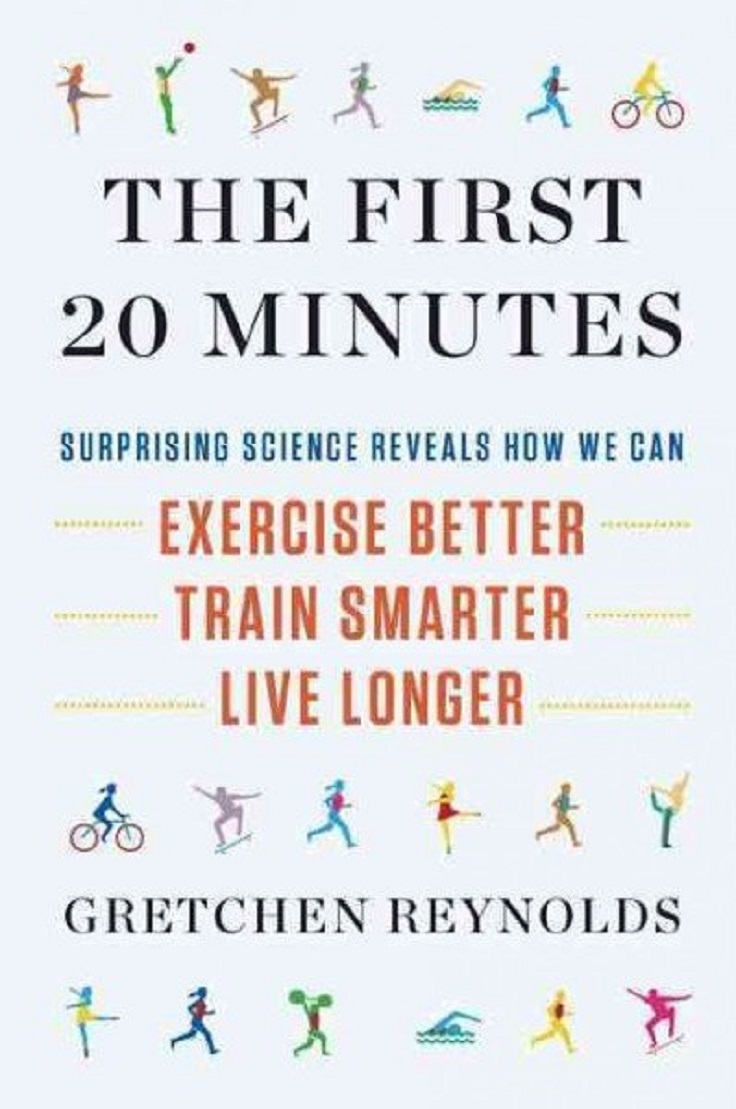
via npr.org
The most important thing you can do is stand up every 20 minutes or so. Gretchen Reynolds, a reporter on exercise research for the New York Times, wrote a book condensing health studies down to their most essential parts. One of the key takeaways from her research was this emphasis on standing up and the golden 20-minute mark. Even if you can’t go for a walk or even take a bathroom break that often – you can make it a point to stand up every 20 minutes for about a minute, and then sit back down.
2. Walk More
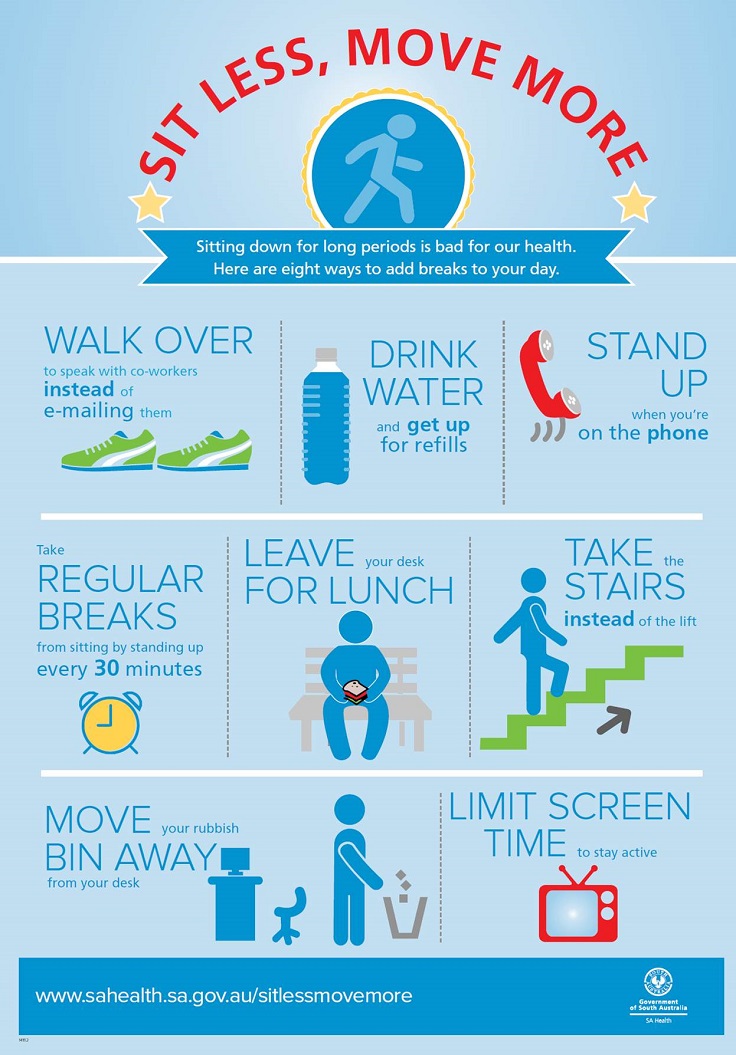
via sahealth.sa.gov.au
Prevention is the best remedy so sit less and move more. Plan your activities, for instance, you might start the day at the office, spend the late morning at a coffee shop, hit a co-working space in the afternoon, and return to the office conference room to wrap up your day. Walking in between each work place injects multiple opportunities for movement into your day. Moreover, you can walk over to speak with your co-workers instead of e-mailing them, or take the stairs instead of lift. Choose to park far from the office, take the stairs, use some of your lunch break for a walk, or walk to and from work, and you will be much less likely to suffer the fatal consequences of a desk job. Lot of possibilities, but you should develop your routine.
3. Correct Sitting Posture
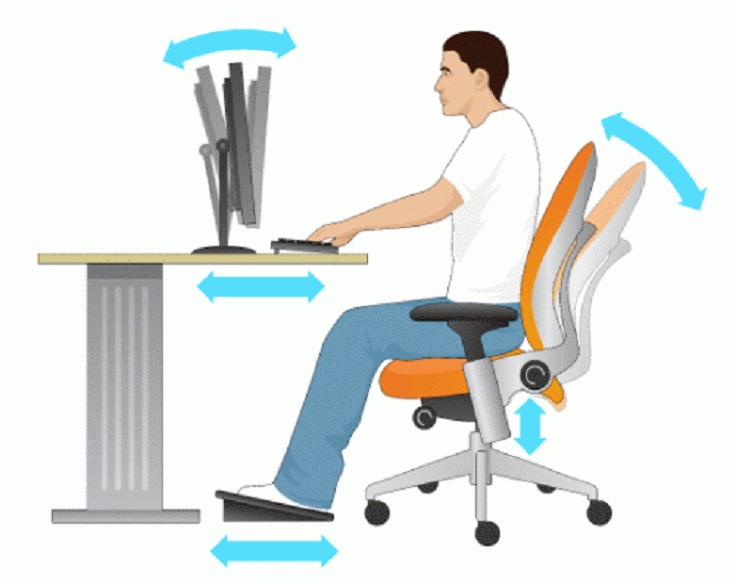
via fitnesselate.com
Posture plays an important part of everything we do. Whether you sit, stand, sleep, or move, your posture, which is the way your body holds its position, needs to be as balanced as possible. We sit an average of 12 hours every day. That’s half of a day or half of a life, quite a lot considering we aren’t built for it. Sitting puts pressure onto our back and body that it wasn’t designed to handle very well. Take a look what actually happens when you sit and get some tips and advices for correct sitting posture.
4. Move While You Sit
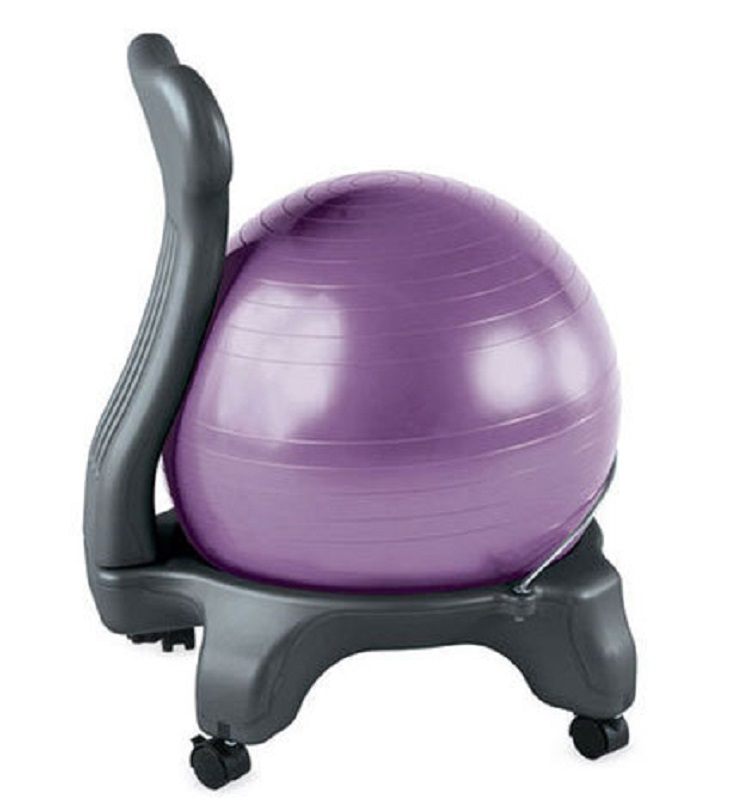
Buy an active desk chair. The dynamic chairs do offer benefits. Their biggest benefit comes from their ability to let us sit a little higher than usual, which increases our hip angles. A more open hip angle not only activates the core muscles, but helps us keep more of a natural curve in our spine, called the lumbar lordosis. Usually when we’re sitting, we pull the pelvis under us more, which can lead to disc pressure and other back pain. Ideally, you’ll want to look for something that’s height-adjustable, so you can use it as a chair and as more of a standing aid to lean back on. Also, look for something lightweight, since you’ll be swapping it for your regular desk chair pretty regularly as you build up that core strength. Make sure it’s stable enough that you won’t go tumbling to the ground. And don’t forget to look for something with a comfortable, cushy seat!
5. Use a Standing Desk
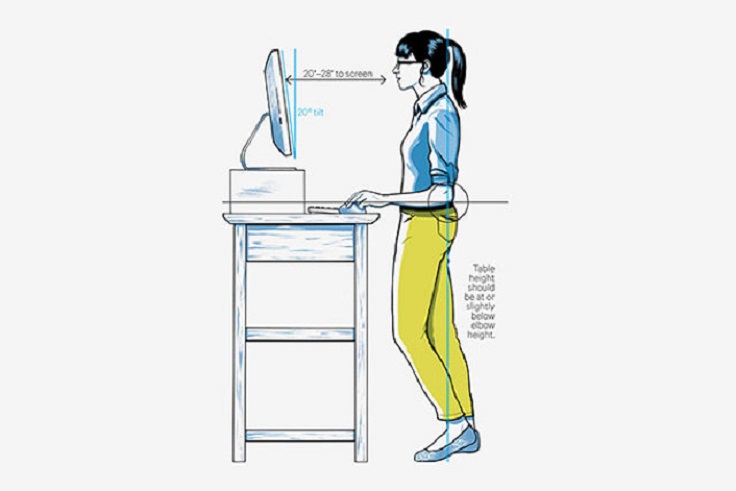
via fastcompany.com
Perhaps the most obvious and increasingly popular idea of how to stand and move more at work is to convert your workstation with a standing desk. Posture is essential no matter what desk you use. Here’s a helpful graphic about the appropriate height, distances, and angles for a standing desk. You can start with a fixed-height standing desk. This can be as simple as spending a few days working from a kitchen counter or a coffee bar. Then you can move on to adjustable standing desks which have several advantages such as you can vary the height at which you work when sitting, standing, or moving in between.
6. Stretch Out
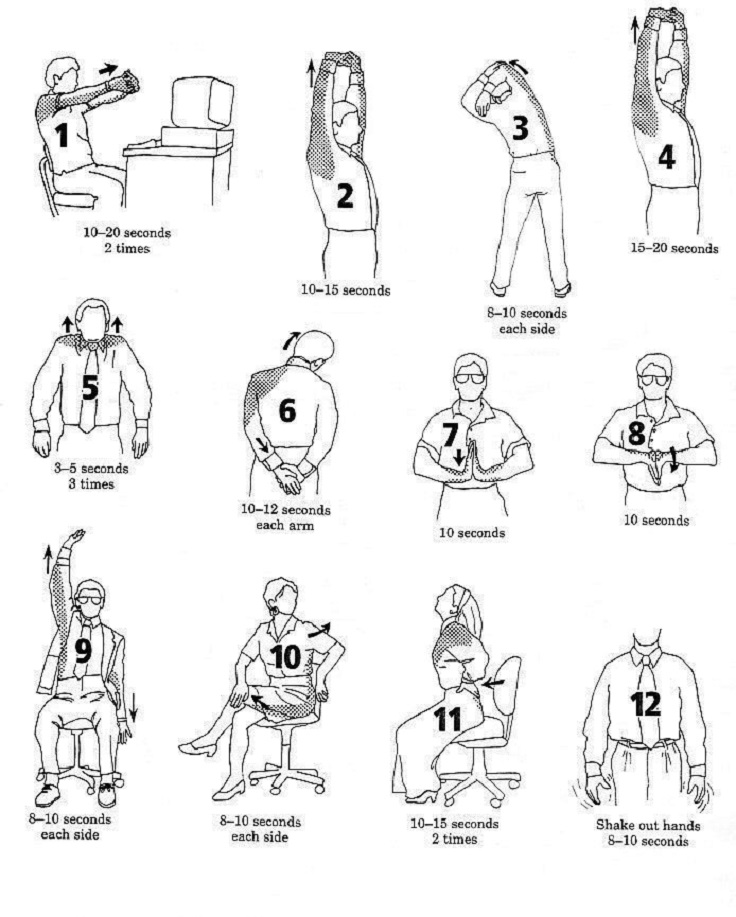
via 66fit.com
Stretching exercises should really be incorporated into your everyday routine. Stretching prompts computer users to pause for a short break and do slow stretching exercises while sitting in their chairs. This is to help prevent repetitive stress injuries which generally occur when body is in sitting position for a long time. Stretching does not only assist in increasing flexibility and relieving muscle tension, but also increases blood circulation which means all the healthy nutrients you’re ingesting will reach their desired destination and fulfill their purpose quicker. This increase in circulation also assists in removing the waste by-products from muscle tissue resulting in a much healthier you!
7. Foam Rolling Moves
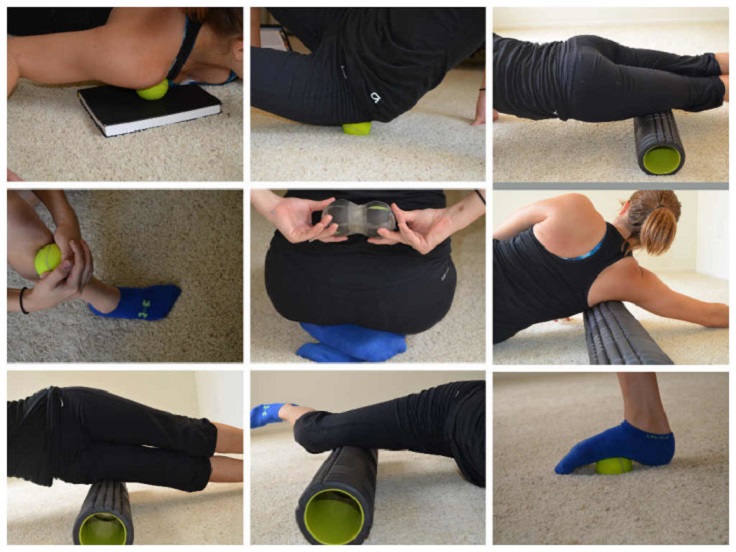
Many of us have poor posture. Poor posture caused by sitting at a desk hunched over a computer for 9 hours a day, which can directly cause pain and even lead to injury when working out. Here you can find 10 foam rolling moves for to alleviate the pain and tightness caused by sitting hunched over all day. Because loosening up the tight muscles helps you increase your mobility further with dynamic stretching and also allows you to truly activate inactive muscle groups!
8. Walk While You Work
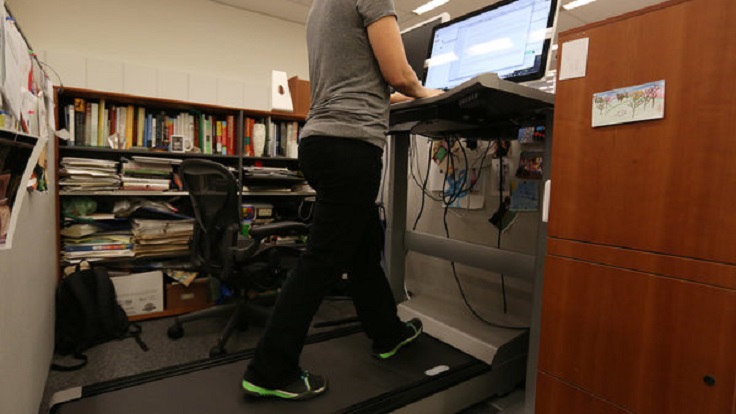
First commercialized in 2007, treadmill desks, which consist of an adjustable-height desk surface atop a treadmill optimized for use at slow speeds, were clearly gaining ground. Lawyers, computer programmers, college professors and no shortage of writers, were blogging their praises and posting their workday mileage. Why not try!
9. Simple Office Workout Routine
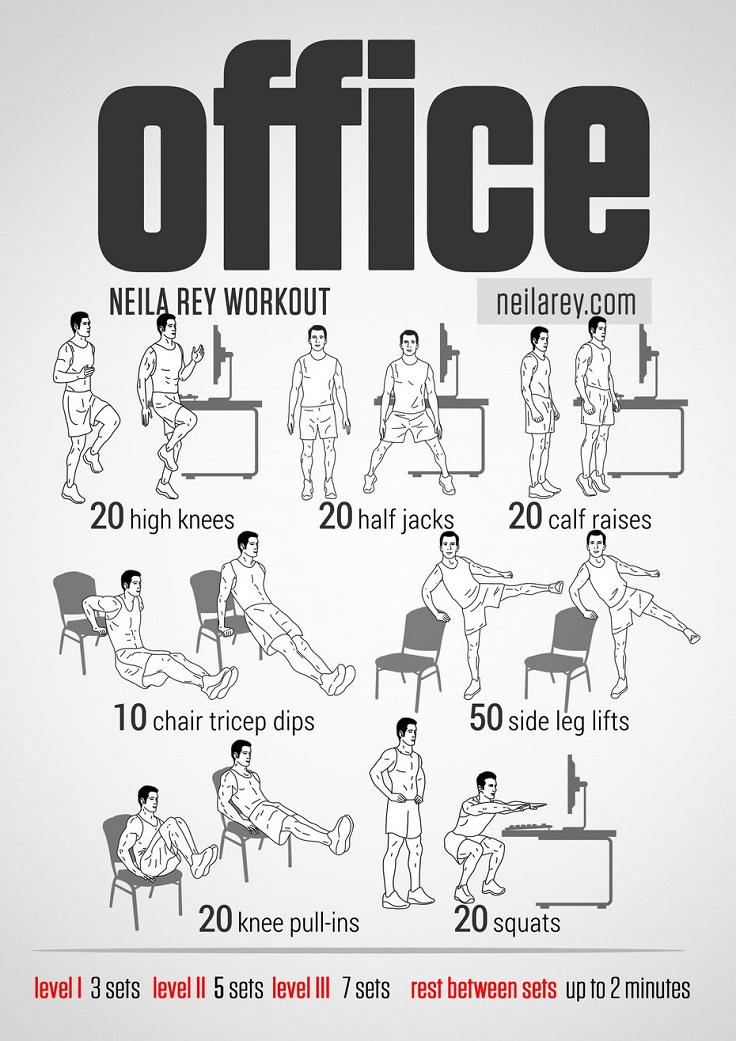
via karmajello.com
Wouldn’t it be great if we could find a few exercises that take no more than five minutes and won’t make us break into a sweat but gives us the movement we need to get rid of the kinks in our bodies which we develop through sitting for long periods without regular breaks? Well there is, and the image provided speaks for itself because it’s easy to follow and anyone can do it, regardless of fitness level.
10. Advanced Office Workout Routine

via followfashion.nl
Make some office exercises! There are plenty of ways to increase your movement at work. Here you can find whole series of advanced office-friendly exercises such as standing hip extension, stand, star arms, pigeon pose stretch, trap stretch, desk push-ups, and desk dips. During work hours, it can be a challenge to remember to get out of your chair every quarter-hour, so an alarm can be quite helpful. A helpful tip would be to set a timer or use a timer on your cell phone.




Great Article!